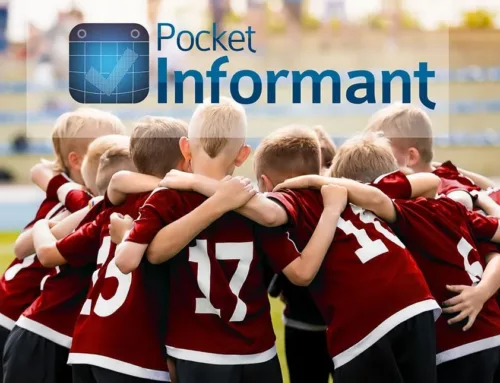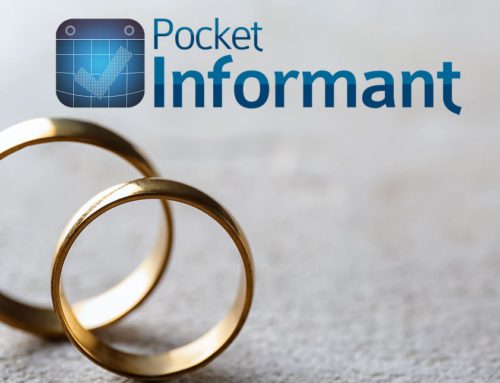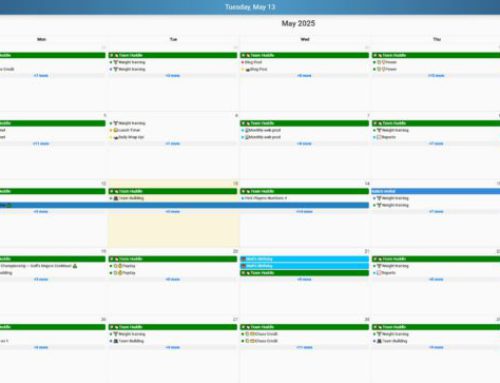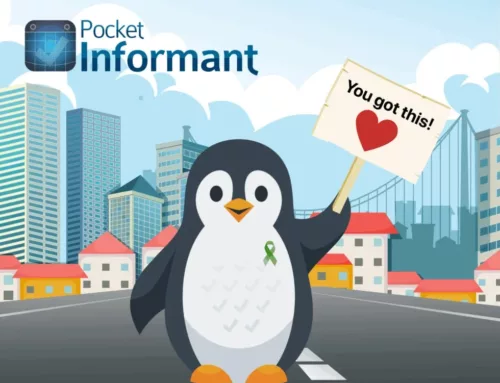The App Economy
There has been much said recently about the state of the Apple App Market (sample here, and here, and here). Frankly, it sucks. The truth is that there simply is not enough market to continue a business based on “volume” or new customers. There is no volume, not for the vast majority of developers anymore. I have spoken to many successful developers and the answer has been the same for every single one of them: iOS app revenue has dropped precipitously in the last 2+ years. I’ve kept from commenting on this for a long time because I don’t want to give the impression that we’re whining or that we’re about to go under, but there is so much going on in the market today that I felt it was time.
Successful Sales Models
Today, there are only three successful models for App Sales: Upgrades or create new apps on a periodic basis, have a plethora of in-app purchases for content, or a subscription. There is one more, but it’s not really a model and that’s to be a hit-wonder that is talked about by every press outlet when you sneeze. I’m also ignoring ad-supported models because that’s a totally different situation which is more content-oriented.
Paid Upgrades
The first model you can see by game developers in particular are where they release a new game every 6 months or in providing a paid upgrade of the same app every year or two. This is also closest to the traditional model that we still have on the Mac/PC with periodic upgrades, but it hasn’t been used much on iOS because users have gotten used to the idea of getting free upgrades for life. Unfortunately, that’s not sustainable because new software takes work and that work is not free. I’m partial to this model because users can choose to upgrade if they wish, but you aren’t forcing them to.
In-App Purchases
The second model is to have a plethora of in-app purchases. For a long time we’ve resisted this model because we wanted to keep things simple: buy one Premium upgrade and you’re done. We’ve recently added this model because of feedback we’ve seen from many people who just want to use one part of the app and pay accordingly. Some of the pros of this model are that you let the user have control over what they buy. They just want one part of your app? Great! However one of the negatives is that you’re complicating your app purchase model and it’s sometimes more difficult to try and explain exactly the user is getting.
Subscriptions
Finally, we have the subscription model. On paper this is the best model because it can give a lot of benefits to users, but it’s the one users hate the most. People point to it being successful for Apple, Microsoft, Adobe, et al – but really, look at who we are talking about: big companies whose ecosystems have become entrenched. You and I are not in the same league. So how is it the best model on paper? Let’s list the benefits:
- Up front price should be lower
- Can break the cost up into per month/quarter so it’s easier to handle
- Developers can just develop new features as they imagine them instead of waiting for the next major version. If you sometimes wonder why feature “x” hasn’t shown up in your favorite product yet when the developer has shown enthusiasm for it, it’s probably because it’s coming in a future paid upgrade. Subscriptions get rid of this need to save the best new ideas for the next paid release
- The developer gets paid while he works and has incentive to continue improving the app. If a user is unhappy with bugs, performance, or what not – they can leave and their money goes with them. I can’t imagine a better incentive for developing amazing software.
- If you are multi-platform, we can offer one subscription that covers any platform you are on. Imagine buying Product A on platform X and being able to use it any other platform they support.
The key point is the more you use the software, the more important it is – the better value that subscription becomes.
There are of course cons, the primary one being that you’re renting software instead of owning it. My own personal take on this – ignoring my position as a developer – is that software that I use daily and constantly I’m willing to rent for the benefits above, while software that I use only occasionally or rarely I am not.
This past week we saw our really good friends Smile go through the ringer (here, here, here, here) at their new fantastic release of TextExpander 6, which is based off a subscription service. This is a successful company that saw subscriptions as the only way forward in the world we live. Frankly, I see how they would think so as I look at the things we want to do with Informant and then go look at our App Store revenue; but I’m not willing to commit to that as our only option.
Informant à la carte/Subscription
With Informant 4.9 we introduced a new sales model to see how it might help that. We’ve made a few pretty significant changes that might not be apparent to longtime users.
With 4.9 we’ve provided you three ways to use it. The first is Informant at the free level is now a powerful calendar with no restrictions on calendar usage. Use it just like you would the Apple Calendar – and it’s free! The second is you can now buy Informant à la carte or in one Premium purchase. And finally, you can subscribe to Informant Sync and get the Informant iOS app for free during the subscription period.
We are also considering releasing a paid-up front Informant 4.91 on the App Store in addition to the free download. Right now the free download can’t participate in Family Sharing, Volume Purchases, Educational Discounts, or Business deals.
So how is it doing? It’s too early to see – but we’ve had nothing but praise from new customers on these changes. People love having the choice. Want to know the breakdown?
- 40% are buying the Premium Pack
- 20% are buying the Tasks Pack
- 10% are buying the Power Pack
- 10% are subscribing
- 10% is the rest
So this is an interesting mix and we’re going to see how things go, which will determine what we do for Informant 5, but in the meantime let me assure you that our goal is – and always has been – run an ethical business that is profitable, but does right by the customer. The great thing is with Informant 4.9 – you have all the options you want to buy just what you want. Does it solve our problem of sustainability in the face of the app economy today? Ultimately, probably not. It may help, and I hope it does, but I think the real answer lies in what we could do if we were a bigger company.
Fanatic Software … in the future?
We are a small company – just a couple engineers, a couple people for support, and marketing. But we could be a lot bigger. Fanatic (previously WebIS) has been around for 19 years and we’ve been successful at surviving, but like the Once-ler said in “The Lorax”, I’ve got plans! Big plans! I see a huge potential market that encompasses what we do today…and what I hope we will be doing tomorrow. That market has so much potential that if we had the chance to go for it, I believe we could blow the App Economy out of the water because we wouldn’t be relying on that anymore.
So yes, I have a vision, I have a business plan, and I know how to get there and with whom. Unfortunately I don’t have the resources and I’m not familiar with how the investor capital system works. However even without that, we are plowing forward and even if we can’t execute my grand plan – we can get bits of it in the future and I think it’s going to make a real difference to people’s use of Informant.
BTW – if you are someone that wants to help us get to that next level – drop me a line. We’re looking for people to shepherd us through real investor scenarios. We have a serious business plan and presentation for serious inquiries only.





Of course, software costs money to make, and you should be rewarded from making great software. I am a PI enthusiast and am glad to ‘rent’ / subscribe to Sync, I’d pay a much higher price given the value it has in my life. Users don’t like rentals because they perceive the chance of something being taken away, Fanatic hasn’t done that for me, so recurring funding feels a-ok. What else could you give to folks who want to pay? Priority in your backlog? Would a partnership jump a curb, maybe Atlasian? Users who want things for a price of one coffee, ever, they aren’t the users you want.
I agree with Andy. I have been a PI fan for close to 10 years. I started when I had my first smartphone, an HP iPAQ. I have loved PI ever since. It provides great value and I would be willing to pay an annual fee as long as I see ongoing improvement continue.
Thanks for all you do.
Yes I have been with Fanatic Software for a while. I don’t know when I started (Before the subscription service, and I’m on Android). It seems that since the beginning that the focus has been on Apple. I have no problem with Apple but I refuse to use their system. I would go all Linux but I can’t get Photoshop on Linux so that’s not happening. However if you could port the app over to the windows app platform I’d gladly pay you an extra $5 to $7 bucks a year so that I could use it on my desktop with no problem assuming that it would work.
I think that the assumption that the world should revolve around Apple is what is pigeon-holing the firm into a contained place. Granted there may be more Apple users (I doubt it), but functionality and seamlessness is what I want most as a consumer. Also I don’t need to deal with the data corruption problems from Fieldston. They do a pretty good job but some things don’t work as well as they should.
I think that you should be thinking about integrating a CRM into the system. Possibly looking at an awesome App like DW contacts for acquisition (Which allows me to text blast as many contacts as I want) (When changed my number I texted everyone in my contact list for free). An add-on mileage tracker probably wouldn’t be bad either. Follow-up is ok, but not intuitively functional CRM out of the box. I haven’t messed with it all that much. The reminders are nice but not smart.
Our vision for Fanatic and forward is much much bigger than just calendars/tasks. Honestly, its not something we’re going to publicly talk about, but its one that we’ve happily talked about to any potential investor. Windows support there as well.
However just like you’re not going to ask a Chevy guy to make mods for your Ford, you can’t ask Chris and I – dead-set Apple guys – to write Windows software. I’m totally for us writing Windows software if we have a Windows developer, but its not something I personally will do because I don’t write Windows software. And without investment capital, we don’t have the ability to hire a Windows developer to design and write a version of Informant for the next 18 months before we could sell it for one dime.
Hi Alex
All of this makes sense but what is not clear is what happens to existing customers. Do we just stop getting updates for what we have and have to buy/subscribe to the new version?
It means absolutely nothing for existing customers. It only applies to new customers.
I’ve been a user of Pocket Informant for a very long time. I started with a Widows Mobile version then I believe there was a palm version. When the iPhone 3G originally came out there was a promise that it would come to the iPhone and sure enough a few months later it did. I have been with Pocket Informant on iOS ever since and when the MacOS version was released I jumped on it right away. Now it is basically my go-to calendar and task app. I subscribe to Informant Sync ad love it. I don’t mind the subscription model at all. I use Office 365 across several machines, my iMac, iPad Mini, iPad Air 2, macBook, iPhone and a Windows laptop I have had for about 6 years but rarely use anymore. I have no qualms about paying for quality software that works. Pocket Informant falls in that category. It’s ridiculous to think that a company should provide a lifetime of work and updates for free. Those same individuals would not do their jobs for free so why should they think software developers should.